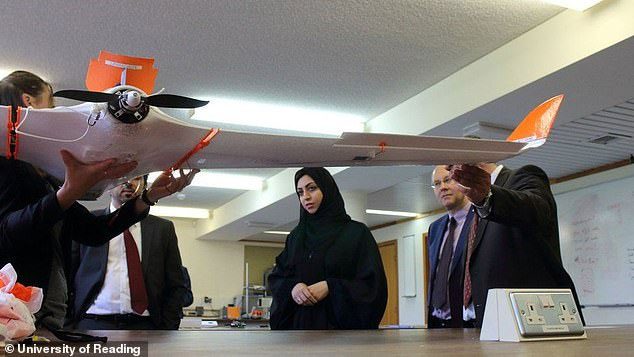The United Arab Emirates (UAE) is employing a technique known as “cloud seeding” to create artificial rain, alleviating the scorching heat that exceeds 50 degrees Celsius in one of the driest countries in the world.
According to the BBC, artificial rain in the UAE is generated by using drones to discharge electrical charges into clouds, effectively “coalescing” them together to produce rain.
The UAE is one of the driest nations in the world, and scientists hope this artificial rain technique can help increase the country’s meager annual rainfall.
In fact, this rain-making technique has proven successful. Videos released by the UAE National Meteorological Center show heavy rain pouring across the country.
Puddles were visible along the roads as drivers navigated through the downpour, despite the country experiencing a heatwave in the middle of summer. Temperatures in some areas of the UAE have soared above 50 degrees Celsius.

Drones used in the “cloud seeding” technique. (Photo: UR)

Illustration of the steps to create artificial rain in the UAE: 1. Launch a drone equipped with a discharge device to a certain altitude. 2. The operator activates the drone to discharge into the clouds. 3. Water droplets accumulate and adhere together, becoming heavy enough to fall and create rain. (Photo: Daily Mail).
The UAE National Meteorological Center has reported that the country’s rainfall has increased due to the technique known as “cloud seeding.” The goal of this technique is to enhance water condensation within clouds, thus generating heavier rain.
The rain-making process using the “cloud seeding” technique is being researched by a team of experts at the University of Reading in the UK. Professor Maarten Ambaum, who is involved in the artificial rain project in the UAE, shared with the BBC that earlier this year, the UAE had sufficient cloud cover to produce artificial rain using the “cloud seeding” method.
This technique employs a drone to discharge electrical charges into clouds, helping water droplets merge and adhere together to form rain – “similar to how a charged comb attracts loose hairs when styling hair“.
“When the droplets combine and grow large enough, they will fall and create rain“, Professor Ambaum stated.
In March, Alya Al-Mazroui, director of the UAE’s rain enhancement science research program, shared with Arab News that “equipped with a large array of discharge devices and custom sensors, these drones will fly at low altitudes and discharge into the clouds, encouraging water droplets to coalesce.”
The “cloud seeding” activities are part of a $15 million project that the UAE initiated in 2017 to generate rain in this arid nation.



















































